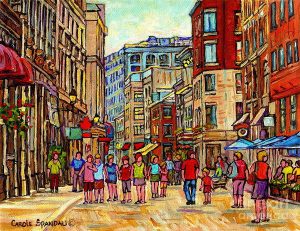Tuesday’s talk inspired me to continue to find different ways to use my time, so I can develop more skills essential to obtaining success. Being able to develop smart and engaging digital marketing strategies has been a goal of mine for a while, and I am even more aware now of just how important such a skill is. As I learned from the “Art Power” panel last month, a crucial skill to acquire is capturing people’s attention. What you have to offer will often not reach your target audience if they are not drawn to the marketing of your idea. Once you have their attention, however, news of your purpose will have a higher chance of spreading — through shares, tweets, and word-of-mouth.
One thing that particularly stuck with me during this talk is to never underestimate the power of any platform. It has been years since I have been active on Facebook. I find Twitter and Instagram better provide the service I desire. Still, many of my friends and family members remain active on Facebook, and Facebook continues to have an overwhelming number of users. Though I personally do not spend much time on Facebook, if I want to increase my online presence, it would be unwise to ignore the reach Facebook still has.
My use of Facebook will still certainly differ from how I use other social media platforms; that’s because Facebook simply is different. Every platform for digital marketing should be approached individually. Some marketing formats work better with one platform over another. I must ask myself questions like: Is it appropriate to use sarcasm to be humorous on this platform, or is it more likely to be received as hostility? My audiences will vary from platform to platform, and while I aim to convey what I plan to share with others, I must also keep in mind how different audiences will receive what I put out into the world.



